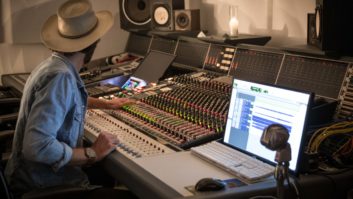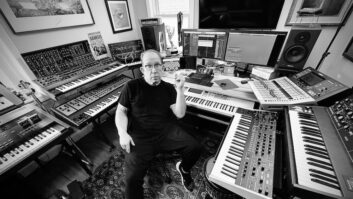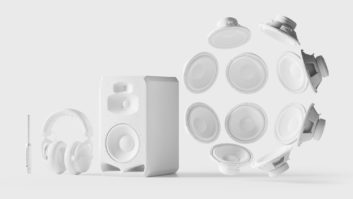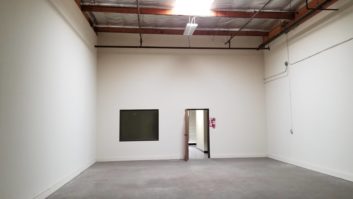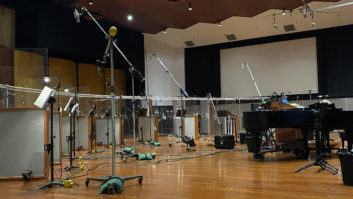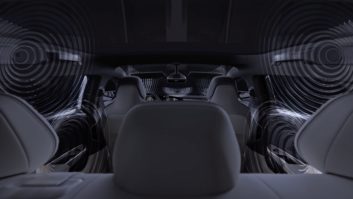When Wade Norton, chief engineer at NRG Recording Services, describes the old days — before the studio installed a Fibre Channel SAN to link its Pro Tools systems — things sound a bit unstructured in the asset-management department. “We had the studio’s Pro Tools systems and the clients’ Pro Tools systems,” he says, “with hot-swap drives being traded back and forth. There was no procedure for moving data around, no typical project workflow and no de facto standard for how things were done.”
The day-to-day operation, Norton recalls, was often chaotic. “The variations were endless,” he says. “Some sessions went flawlessly; some sessions were worse than others. We had multiple versions of projects, with nobody really keeping track or doing file management. Some clients looked to us to back up their material, and some did it themselves. Others would leave at the end of the day with a drive full of new material, when the studio should have held the ‘tapes’ for billing.”
NRG’s studios in North Hollywood, Calif., feature large, high-ceilinged rooms with Gothic and Moroccan styling, two full studio/control room combinations — each with four isolation booths — and one mixing room. In addition to the Pro Tools 24|MIXplus systems in every room, the facility is outfitted with SSL and Neve consoles and Studer 24-tracks. Clients include artists such as Beck, Korn, Sugar Ray, Linkin Park, Papa Roach and Staind.
Recognizing the importance of bringing order and coherence to the way Pro Tools projects were handled at the facility, Norton and owner Jay Baumgardner consulted with Paul Levy, owner of North Hollywood’s Advanced Audio Rentals. AAR specializes in digital audio rentals for post-production and music recording, while subsidiary BuyAudioGear.com is focused on hardware sales for high-tech audio applications.
FOCUSING ON FIBRE
“The studio’s plan was to offer Pro Tools as a no-charge extra included in the studio’s daily rate,” says Levy. “Using Fibre Channel was Jay’s idea. He wanted to get all of the noise from the hard drive bays out of the rooms. Using SCSI to do this was not practical because of SCSI’s cable-length limitations.”
Fibre Channel is both a data-transfer protocol used between network devices and a serial data interface. To confirm accurate data transmission, the protocol provides error-checking and data-reception notification. The primary burden of implementing these features is placed on the network hardware rather than the connected hosts and servers, so the throughput of a Fibre Channel network is actually higher than that of an Ethernet LAN (Local Area Network) with the same nominal transfer rate.
The Fibre Channel protocol is also designed to avoid the “data collisions” that can drag down the performance of Ethernet. Ethernet LANs are fine in a production environment for non-real-time data transfers, but Fibre Channel is designed to better handle real-time playback of time-based information such as audio and video. The downside is that a Fibre Channel setup is generally much more costly than Ethernet.
Fibre Channel is typically used in a network configuration called a SAN (Storage Area Network). Each workstation on the network is equipped with a Fibre Channel Host Bus Adapter (HBA) PCI card, which is directly connected to a Fibre Channel switch. The switch, in turn, connects to the system’s storage drives.
What’s unique about a SAN is that each host (workstation) on the system sees the storage as if it were a local drive (hooked directly to that computer) rather than a remote drive on a network. This greatly simplifies issues of version control. In a LAN with a central server, each user downloads files to a local drive, modifies them and then uploads them at the end of the session. With multiple users creating different versions, the potential for confusion is clear. But with a SAN, everyone with permission to access a given file works from and on the same version, stored on the same common storage.
DRIVING AWAY NOISE
Levy says that as far as NRG was concerned, the fact that a Fibre Channel SAN would allow sharing of files between workstations — as well as unattended tape backup — was initially just a bonus to the primary objective of reducing noise by removing drive bays from the control rooms.
“Fibre Channel was the only protocol that allowed the needed throughput at the distances required,” Norton confirms. “No other options were really considered. We knew of video post houses that were already using it. It just hadn’t been used in an audio environment yet, that we knew of.”
In addition to the cable runs supported by Fibre Channel — up to 500 meters — Norton was drawn to the flexibility of the system. “Since it’s a very open architecture,” he says, “expandability is just a matter of adding more hardware. Need more seats, but the switch is full? Add another switch. Need more drives? Add another drive bay. You don’t need to replace your old hardware with new. You just add more.”
Norton says NRG decided on a 16-seat switch to start. “Because of the ease of expandability, we knew that we could always add more later. So we only had to buy enough to cover what we wanted to do at that time. We dropped a Fibre line into every control room, and into every iso booth that was big enough to accommodate a full rig, monitoring and an operator.”
The bulk of the system, Levy says, was designed around a configuration utilizing products from Rorke Data, for whom Levy’s company is a dealer. Norton adds that Rorke’s package included technical support for both software and hardware.
Summing up the system, Norton says it includes a Vixel 16-seat fabric switch, a 12-bay Rorke JBOD chassis populated with 12 36GB Rorke hard drives, a Rorke AIT2 tape backup with 10-slot autoloader, StudioNet volume management and network software, and a Macintosh G4 for backups, administration and transfers. The entire rack is powered through a Fenton UPS.
Levy says the 16-port Vixel fabric switch was chosen for its “proven field-worthiness. Once you connect your JBOD chassis, the Mac G4 for admin and an uplink for another switch, you have 10 ports left.”
Regarding system capacity, Norton says, “We’re running 12 of the biggest drives we could get at the time: 36 GB. There’s plenty of storage to go around, plus a samples drive and a couple of spares.” The complete set of Seagate 10,000 rpm drives adds up to 512 GB of online storage capacity.
“The system is open-ended,” Levy adds. “If you want more storage, you can install 73GB Fibre Channel drives, or daisy-chain another 12-bay chassis to add drives that way. The switch can uplink to other switches in the network — you don’t have to throw anything away. Once Seagate releases their 36GB 15,000 rpm drives, we’ll go over to those, as the performance is really incredible.”
The storage is configured as a non-redundant JBOD (Just a Bunch Of Disks) rather than a RAID (Redundant Array of Independent Drives). “Jay and I decided that RAID redundancy was not worth the extra cost,” Levy says, “or managing the extra complexity. NRG has been up for over a year with this system, and I haven’t seen the switch or drive-rack fail yet.”
While a JBOD provides less security than a RAID for a session in progress if there is a drive failure, the tape drive allows NRG to back up the data for every session. “The tape library has a native capacity of 500 GB,” Levy says, “enough to back up the entire JBOD if needed. You can run the AIT2 tape drive at 2:1 compression all day, no problem, increasing the capacity to 1 terabyte. If that’s not enough, the library can be upgraded to a 20-slot capacity, for a 2:1 capacity of 2 terabytes. And, if necessary, you can add multiple drives and magazines to push the capacity even further.”
UP AND RUNNING
Rorke did the initial setup of the hardware, and trained Norton on the administration and maintenance of the equipment. “It was pretty straight-ahead,” he says. “The part we had to do ourselves was to run the fiber-optic cable. Since fiber is optical, there is no interference to or from any other equipment. So we were pretty much open to putting fiber anywhere we thought necessary — and then some. Since I’d already run an Ethernet network in the building, the pathways were defined. But the equipment to prep fiber optics is expensive, so we chose to sub that out to another company.”
Once the system was up and running, NRG was able to reorganize its approach to the use of Pro Tools in the rooms. “Users are assigned drives that only they have access to,” Norton says, “so their data is secure from others. The data is backed up every morning. If there’s a problem, we can restore any file, project or drive, from any given day during their session.”
By now, Norton continues, clients have pretty much come to rely on the system. “Clients can go to any station and have access to their material. If there are any problems, the studio is fully involved. Instead of the client’s rig being ‘his problem,’ it’s now our equipment and ‘our problem.’”
Levy says that as NRG began to use Fibre Channel on a daily basis, the studio started to realize that there were additional benefits to the approach, such as added security of a client’s master source material. “When a client leaves the facility, they can take their session on hard drive, AIT or CD,” Norton explains. “But we also keep a copy archived in our backup that can be restored at any time. So clients can always request additional backups.”
Another benefit, Fibre Channel’s expandability, is also making a big difference now that the NRG facility itself is growing. “The studio will be expanding into a second building a block away,” Levy says. “It will be relatively easy to link multiple SANs via telco fibers.” As a result, people at the two sites will be able to work together as if they were housed in one structure.
Overall, the SAN has brought a more structured approach to NRG’s management of files and hard drive media, which have increasingly replaced tapes as the physical embodiment of a session’s many long hours of trial and toil. The system also puts NRG firmly in the driver’s seat.
“We now service and maintain all our own Pro Tools rigs,” Norton says. “All studio staff are trained in their operation. The hard drives are routinely optimized and maintained. The session files are in the studio’s possession at all times, and nothing is released until management okays it. The SAN lets the studio be in control.”
Philip De Lancie is the new-technologies editor at Mix.
